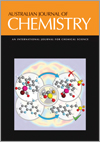
Australian Journal of Chemistry
Volume 74 Number 4 2021
CH20029Selective Identification of Phenylalanine Using Cucurbit[7,8]uril-Based Fluorescent Probes
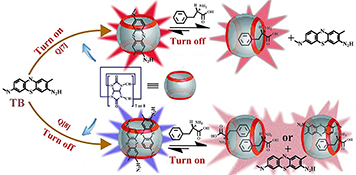
The interactions of two host–guest inclusion complexes comprised of cucurbit[7]uril (Q[7]) and cucurbit[8]uril (Q[8]) with toluidine blue O (TB) were investigated. Furthermore, TB@Q[7] and TB@Q[8] complexes exhibited high selectivity for phenylalanine through fluorescence quenching or enhancement in aqueous solution, respectively.
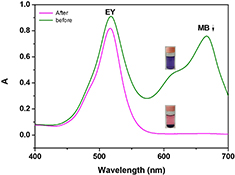
A pyridone modified cellulosic adsorbent is used as a highly selective adsorbent towards organic dyes. The adsorbent is able to selectively adsorb a cationic dye (Methylene Blue) over an anionic dye (Eosin Y) from their binary solution in a few minutes and then release the cationic dye in an easy way. Thus, separation of the dyes from their mixture is realised.
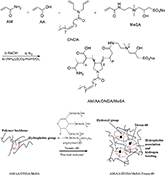
A self-assembly system was synthesised by a zwitterionic hydrophobic association polymer (AM/AA/DNDA/MeSA) and Tween-40. Under the synergistic effect of hydrogen bonding and hydrophobic association, the self-assembly system has salt resistance, shear resistance, and thermal thickening properties.
CH20203A New Strategy for the Synthesis of Organosilicon Compounds of Cyclopropane Derivatives
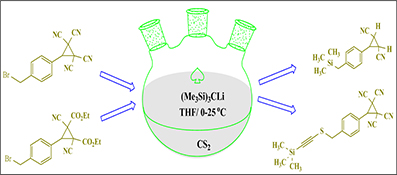
A new strategy to synthesise new cyclopropane compounds with organosilicon functional groups at different temperatures and under different conditions leads to various new compounds. A discussion about the different reaction mechanisms and obtained products (characterised by IR, 1H NMR, and 13C NMR spectroscopies) is given.

The influence of structure and hydrophobicity parameters of reagents and cationic surfactants during their association on the fluorescent analytical signal has been investigated. Rational bases of search and design of analytical systems for the determination of hydrophobic organic cations by fluorescent method have been formulated.
CH20237Colorimetric Aptasensor for Testosterone Detection Based on Aggregation of Gold Nanoparticles Induced by Cationic Surfactant
 , Zhiyu Yan, Weiwen Huang, Dongwei Zhang, Xuejia Zhan and Guoqing Shen
, Zhiyu Yan, Weiwen Huang, Dongwei Zhang, Xuejia Zhan and Guoqing Shen
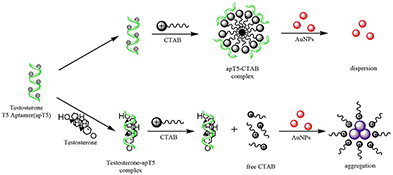
This paper proposes a colorimetric aptasensor for detecting testosterone (TES) based on competition between TES and CTAB for apT5. The results show the aptasensor has a wide linear range from 1.91–800 nM and a good limit of detection of 1.91 nM.
CH20302Reduction Chemistry of Natural Pyrethrins and Preliminary Insecticidal Activity of Reduced Pyrethrins

The reduction chemistry of the natural insecticides the pyrethrins was investigated and a method to convert them into their more stable jasmolin counterparts, as a mixture with the over-reduced tetrahydropyrethrins, was developed. Reduced products resulting from other chemical treatments lacked insecticidal activity, whereas some isomerised analogues showed comparable potency with the individual natural pyrethrin esters.
CH20302 Abstract | CH20302 Full Text | CH20302PDF (1.1 MB) | CH20302Supplementary Material (21.1 MB) Open Access Article
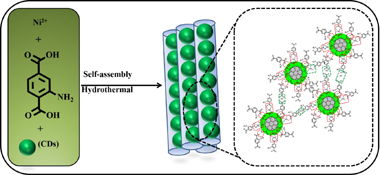
By a one-pot method, the metal–organic frameworks (CDs@NH2-MOF(Ni)) with carbon dots as the core were synthesised successfully. The synthesised CDs@NH2-MOF(Ni) were characterised by FT-IR, SEM, TEM, EDX, XRD, TG, and BET. The synthesised CDs@NH2-MOF(Ni)/TBAB and NH2-MOF(Ni)/TBAB have good catalytic performance for the cycloaddition reaction of PO and CO2.



